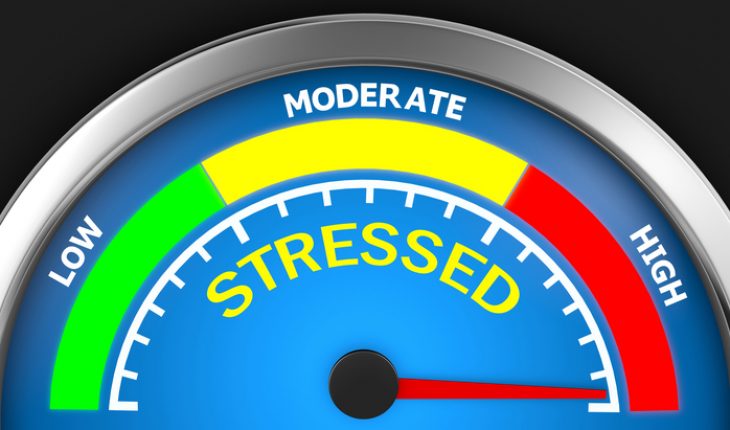Terrorism takes a physical toll, not just on those who are unlucky enough to be directly affected.
In a world with a 24-hour news cycle, we are struggling to manage the information overload. Millions of people watched last week’s tragic events in Westminster unfolding via news websites and TV in real time and shared a common sense of outrage and shock. Since then, social media has been the focus of people’s grief, anger as well as support and compassion.This continuous stream of negative repetitive information will add to our daily stress levels.
This continuous stream of negative, repetitive information will add to our daily stress levels.
The information overload may lead to information anxiety which can take it’s toll on your physical wellbeing too.
As a physiotherapist, I know that many people will suffer from the physical fallout of their stress and anxiety brought on by a process known as the ‘cascade effect.’
Studies show that the initial shock of a traumatic event causes the body to release cortisol, the stress hormone which prepared the body for ‘fight and flight’. Heart rate and blood pressure increase sharply. Breathing becomes more rapid. It causes blood flow to divert away from the skin to the heart and muscles. In a crisis, you are better equipped to run away. If you are sitting infront of your telly or swiping through social media, you may still have the cortisol rush without needing to go anywhere, which has its own unpleasant health effects, such as an increase in fat in the abdomen where is can increase the risk of heart disease.
Adrenaline also floods the system which activates an area inside the brain called the amygdala which appears to trigger emotions including fear.
Adrenaline also floods the system which activates an area inside the brain called the amygdala which appears to trigger emotions including fear.
In the cascade effect, the brain also a small protein called neuropeptide S which decreases sleep and increases alertness and anxiety.
Stress hormones normally return to normal once the danger has passed, but in the case of a major event, this can cause waves of fear and is repeatedly rehashed and reshown on screens, the levels can stay elevated for a considerable period of time. Studies also show that animals who are exposed to chronic fear and stress have an increased pain response. Scientists publishing their results in the journal Life Sciences in 2006 reported that emotional chronic stress in mice increased specific pain responses.
The physical consequences of the cascade effect and chronic stress, is therefore, poor posture, muscle aches and pains caused by an increase in tension/tightness and the onset of new conditions or worsening of pre-existing conditions like back pain. As a physiotherapist, I often witness deterioration in someone’s symptoms due to a stressful chronic event such as bereavement or relationship breakdown.
These are some simple things you can do to protect yourself and they include :
- Technology cut off time
- Set yourself a technology cut-off time. This means reducing your information input towards the end of the day
- Progressive muscle relaxation
This technique was developed in the 1930s and is very effective at reversing muscle spasms and realigning the body. You can do it on your own. (See the podcast below) The basic idea is that you lie down flat on the floor, facing upwards and gradually contact and relax the muscles of your body in sequence while performing breathing exercises. You start with your feet and move up to your pelvis through your hands, elbows, shoulders, and finally the neck and head. In all, it should take no more than six minutes.
Sit up straight
In one 2015 trial, published in the journal, Health Pyschology, researchers found that people who sat up straight were more likely to report higher self esteem, better mood and low fear than those who were slumped over during the tests. Even the way they talked was different. The slumpers used more negative emotion words, first-person singular pronouns, affective process words, sadness words, and fewer positive emotion words and total words during the speech. They concluded that sittng upright may be a simple behavioral strategy to help build resilience to stress.
This might be because an upright posture allows the body to be in perfect balance with muscles in the correct alignment, so the body is put under minimum strain. Nerves and blood vessels are also able to operate to their maximum ability.
Walk tall
When you walk, keep your head up, your shoulders back and down so you feel you are able to carry the weight of the world on your shoulders.
Face the world head on
The most comfortable position for your head and neck is facing directly forwards. And this applies even when you are sleeping. I know many people like to sleep on their fronts with the head to one side, but this is not the ideal posture for the body. You should try and maintain your spine in a neutral position whether you are waking or sleeping. Better is to fall asleep on your back with your head gently supported facing up to the ceiling.
- Belt up for health - 25th April 2017
- The physical toll of terrorism - 27th March 2017
- The Good Sleep Expert relaxation podcast – progressive muscle relaxation - 25th March 2017






